by Dennis Paulson
Published by Princeton
ISBN: 978-0-691-12281-6 (West) & ISBN: 978-0-691-12283-0 (East)
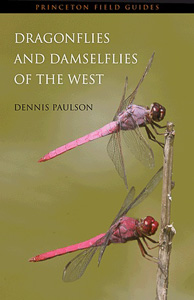 | 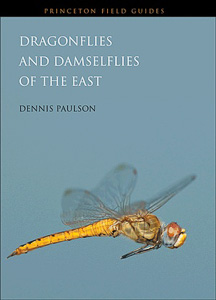 |
From the publisher (west): Dragonflies and Damselflies of the West is the first fully illustrated field guide to all 348 species of dragonflies and damselflies in western North America. Dragonflies and damselflies are large, stunningly beautiful insects, as readily observable as birds and butterflies. This unique guide makes identifying them easy - its compact size and user-friendly design make it the only guide you need in the field. Every species is generously illustrated with full-color photographs and a distribution map, and structural features are illustrated where they aid in-hand identification. Detailed species accounts include information on size, distribution, flight season, similar species, habitat, and natural history. Dennis Paulson's introduction provides an essential primer on the biology, natural history, and conservation of these important and fascinating insects, along with helpful tips on how to observe and photograph them.
From the publisher (east): This is the first fully illustrated guide to all 336 dragonfly and damselfly species of eastern North America - from the rivers of Manitoba to the Florida cypress swamps - and the companion volume to Dennis Paulson's acclaimed field guide to the dragonflies and damselflies of the West. Dragonflies and Damselflies of the East features hundreds of color photos that depict all the species found in the region, detailed line drawings to aid in-hand identification, and a color distribution map for every species - and the book's compact size and user-friendly design make it the only guide you need in the field. Species accounts describe key identification features, distribution, flight season, similar species, habitat, and natural history. Paulson's authoritative introduction offers a primer on dragonfly biology and identification, and also includes tips on how to study and photograph these stunningly beautiful insects.
There are (currently) 462 species of dragonfly and damselfly in America north of Mexico, including Canada. Dividing the continent by a line running north-south along the eastern borders of Manitoba, North Dakota, South Dakota, Nebraska, Kansas, Oklahoma and Texas, these two volumes illustrate and describe all of them. There is a strong emphasis on field identification, with salient points of distinction between similar species clearly noted, supported by copious photographs of living males, females and in some cases colour variants. Comparative text diagrams of appendages and other structural details are provided where useful and each species account is completed with a map and brief descriptions of the natural history, flight period, habitat and distribution of the dragonfly or damselfly. Each family, genus and significant subgenus is introduced with an account of its physical and ecological characteristics. This is particularly helpful for identifying dragonflies, which are superficially much more similar to each other across the various groups than are butterflies, for example.
The Eastern volume includes 336 species and the Western one 348. The 222 species common to both are illustrated with different photographs and the species accounts are adapted to the region. Each book includes the same introductory section on the natural history and study of dragonflies, but again illustrated with species pertinent to the respective half of the continent. The result is that each volume is complete and stands alone but there is little real redundancy in having both. For the convenience of anyone thinking of a trip to the States or Canada, I include in this review a map showing the coverage of each volume.
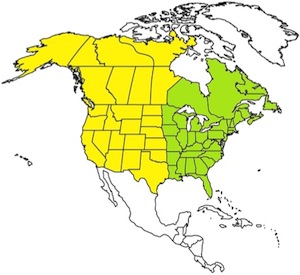 |
The real test of a field guide is using it in the field, which in this case I have not done. But these volumes are obviously authoritative, comprehensive and clearly designed with the needs of the naturalist in mind. The photographs are excellent and while I prefer stylised paintings, of the sort Richard Lewington produces, the text makes up for the unavoidable shortcomings of a photo-guide by including full descriptions of each species. Altogether, these two volumes constitute a complete, highly informative and beautifully illustrated guide to the Odonata of North America.
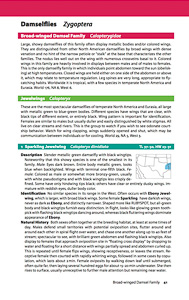 | 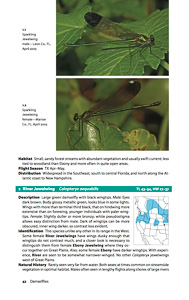 | 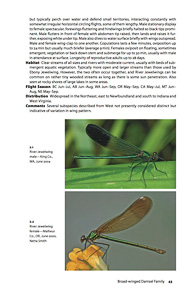 |
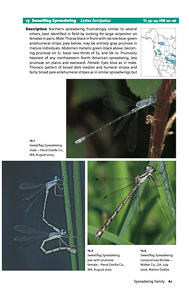 | 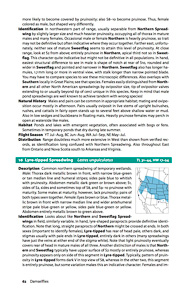 | 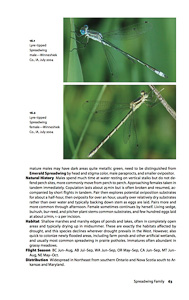 |
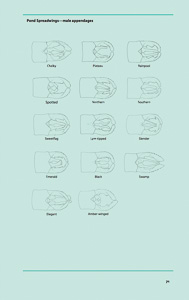 | 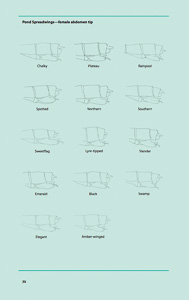 |
The books can be purchased from Princeton University Press here (west) and here (east).